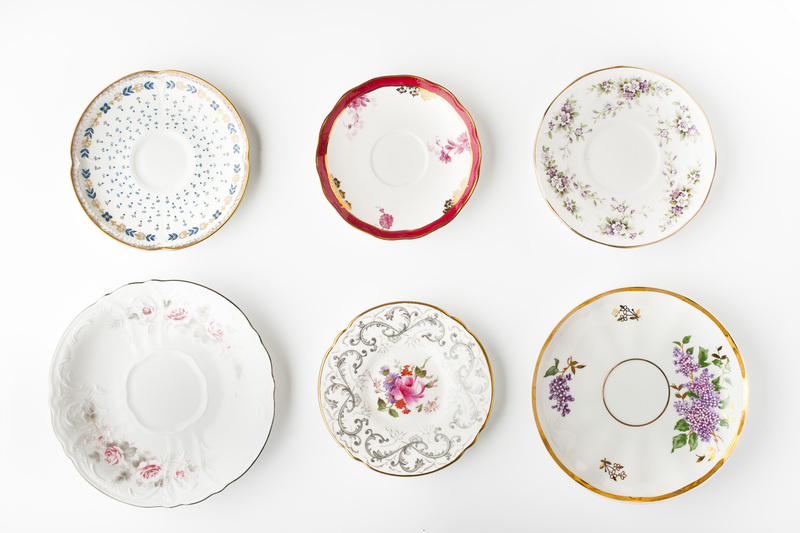Beware of These Harmful Plastics in Your Home
Your home should be a haven of safety and comfort, but hidden dangers might be lurking in the form of common plastic products. While plastics have revolutionized modern living with their convenience and versatility, certain types of plastics can be harmful to your health and the environment. In this comprehensive guide, we explore the most dangerous plastics found in households, why they are harmful, and how you can reduce their presence in your daily life.

The Prevalence of Plastics in Modern Homes
It's nearly impossible to avoid plastics in today's world. From kitchenware and toys to furniture and food packaging, plastics are embedded in almost every aspect of our lives. While many plastics are considered safe, others - particularly those labeled with certain resin codes - have been found to leach toxic chemicals that may harm human health and the ecosystem.
Understanding Plastic Resin Codes
Most plastic products are marked with a recycling code that ranges from 1 to 7. These codes, usually found on the bottom of containers or products, indicate the type of plastic used. Understanding these codes is crucial because not all plastics are created equal:
- Code 1: PET or PETE (Polyethylene Terephthalate)
- Code 2: HDPE (High-Density Polyethylene)
- Code 3: PVC (Polyvinyl Chloride)
- Code 4: LDPE (Low-Density Polyethylene)
- Code 5: PP (Polypropylene)
- Code 6: PS (Polystyrene)
- Code 7: Other (often includes BPA and other risky chemicals)
Let's explore which of these plastics are most problematic for your health and why you should beware of these dangerous plastics in your home.
1. Polyvinyl Chloride (PVC) - Resin Code 3
Why PVC Plastic is Harmful
PVC is commonly found in products such as pipes, shower curtains, window frames, vinyl flooring, toys, and even some food packaging. What makes PVC especially concerning is the presence of toxic additives like phthalates and heavy metals, including lead and cadmium, which are sometimes used as stabilizers in its production.
- Leaches Chemicals: When heated or exposed to sunlight, PVC can leach harmful chemicals into the surrounding environment.
- Endocrine Disruptors: Phthalates, commonly found in PVC, are linked to hormonal imbalances and reproductive issues.
- Persistent Pollutant: PVC is difficult to recycle and persists in the environment, contributing to long-term pollution.
Common Household PVC Items to Consider Avoiding:
- Plastic shower curtains and bathroom mats
- Vinyl flooring and wall coverings
- Children's inflatable toys
- Plastic food packaging (cling wraps, bottles)
- Old electrical cords and wiring insulation
2. Polystyrene (PS) - Resin Code 6
The Dangers of Polystyrene
Polystyrene is found in foam food containers (Styrofoam), disposable plates, cups, cutlery, packing peanuts, and even insulation materials. The main concern with PS comes from its monomer, styrene, which has been associated with several health risks.
- Possible Carcinogen: The International Agency for Research on Cancer classifies styrene as a possible human carcinogen.
- Chemical Migration: When in contact with hot liquids, fatty foods, or acidic substances, polystyrene can leach styrene and other chemicals.
- Poorly Recyclable: Polystyrene is rarely recycled and often ends up in landfills and oceans, breaking down into harmful microplastics.
Beware of these harmful plastic products at home:
- Single-use foam coffee cups
- Takeout food containers (Styrofoam)
- Packing peanuts and foam packaging
- Disposable cutlery and plates
3. Polycarbonate (PC) & BPA-Containing Plastics - Often Resin Code 7
Bisphenol A (BPA): A Silent Threat
Resin code 7 is a catch-all category that includes a variety of plastics, many of which contain BPA (bisphenol A). This chemical is frequently found in water bottles, food storage containers, dental sealants, and the lining of canned foods.
- Hormone Disruption: BPA is known to mimic estrogen and disrupt normal hormonal functions, which may lead to developmental, reproductive, and neurological problems.
- Leaching into Food: Especially problematic when containers are heated or scratched, leading to increased migration of BPA into food and beverages.
- Vulnerable Populations: Children and pregnant women are particularly at risk of adverse effects from BPA exposure.
Common Household BPA Sources:
- Reusable water bottles made with polycarbonate plastic
- Microwave-safe plastic containers
- The lining of canned foods and beverages
- Baby bottles and sippy cups (older products, prior to regulations)
- Receipt paper (thermal paper)
4. Polyethylene Terephthalate (PET or PETE) - Resin Code 1
What You Need to Know About PET Plastics
PET is considered relatively safe for single use, but problems arise when bottles and containers are reused multiple times or exposed to heat and sunlight.
- Leaching Risks: Repeated use or exposure to heat may cause PET products to break down and leach antimony and phthalates.
- Bacterial Contamination: PET bottles can harbor germs if not properly cleaned between uses.
- Single-Use Dangers: PET bottles are designed for one-time use but are often reused, which increases risks.
*It's best to avoid reusing single-use PET bottles for food or drink storage.
5. Preventing Harm: Safer Plastic Alternatives in Your Home
Recognize Safer Plastics: Codes 2, 4, & 5
Fortunately, not all plastics are equally harmful. Plastics labeled with resin codes 2 (HDPE), 4 (LDPE), and 5 (PP) are generally considered safer for food contact and household use, as they tend not to leach harmful chemicals under normal usage conditions.
- HDPE: Used for milk jugs, detergent bottles, juice bottles, and some toys.
- LDPE: Found in bread bags, some food wraps, squeezable bottles.
- PP: Used for yogurt containers, straws, bottle caps, and food storage boxes.
However, "safer" doesn't mean completely safe--plastic use should still be minimized where possible.
Health Risks Linked to Toxic Plastics at Home
How Harmful Plastics Affect Your Body
- Endocrine Disruption: Chemicals like phthalates and BPA can interfere with hormone function, leading to fertility issues, developmental problems in children, and an increased risk of certain cancers.
- Respiratory Issues: Off-gassing and microplastic inhalation from household plastics - especially in poorly ventilated rooms - may contribute to respiratory discomfort and allergies.
- Carcinogenic Concerns: Ingredients found in PVC and polystyrene have been linked to increased cancer risk upon chronic exposure.
- Neurodevelopmental Delays: Early exposure to toxic chemicals in plastics can harm brain development in children.
- Immune System Impact: Research indicates that long-term exposure to certain plastic chemicals weakens the immune response to infections and diseases.
Environmental Consequences of Household Plastics
Beyond personal health, harmful plastics found in the home also wreak havoc on the environment:
- Non-biodegradable plastics accumulate in landfills and oceans, persisting for hundreds of years.
- Microplastics from degraded products contaminate water supplies and marine life, eventually affecting the food chain.
- Incineration of PVC and other plastics releases dioxins and toxic gases, contributing to air pollution and climate change.
How to Reduce Harmful Plastics Exposure at Home
Actionable Steps to Create a Safer Home
Fortunately, with a little awareness and effort, you can significantly reduce the presence and impact of dangerous plastics in your household. Follow these strategies:
- Read Resin Codes Carefully: Always check the recycling code on the bottom of plastic products. Avoid codes 3, 6, and 7 when possible.
- Limit Single-Use Plastics: Cut back on disposable plates, cups, straws, and takeout containers.
- Upgrade to Safer Materials: Choose glass, stainless steel, bamboo, or high-quality ceramics for storage, cooking, and drinking.
- Don't Heat Plastics: Avoid microwaving food in plastic containers or washing plastics in hot dishwashers unless labeled "microwave/dishwasher-safe."
- Discard Damaged Plastics: Replace containers or bottles that are scratched, cracked, or cloudy, as they can leach harmful chemicals more readily.
- Switch to BPA-Free and Phthalate-Free Products: Opt for baby bottles, toys, and food storage labeled as free from these chemicals.
- Ventilate Your Home: Open windows regularly to reduce indoor air pollution from off-gassing plastics.
- Avoid Vinyl Decor and Flooring: When remodeling, choose alternatives to PVC-based materials.
- Recycle Responsibly: Learn your local recycling rules to ensure plastics are disposed of properly.

Frequently Asked Questions About Harmful Plastics
Are all plastics harmful in the home?
No, while some plastics are relatively safe for household use, certain types--particularly those containing BPA, phthalates, or made from PVC and polystyrene--have been linked to health and environmental issues. Always check for resin codes and use safer materials when possible.
Is it safe to reuse plastic water bottles?
Many single-use plastics, such as PET (#1) bottles, are not designed for reuse. Over time and with exposure to heat, these bottles can degrade and leach chemicals. Instead, opt for reusable glass or stainless steel bottles.
How can I recognize safer plastic toys and baby products?
Look for products labeled "BPA-free" and "phthalate-free," avoid vinyl (PVC) toys, and select items made from polypropylene (#5) or natural materials.
Conclusion: Protect Your Home and Family from Harmful Plastics
Being aware of these harmful plastics in your home is the first critical step toward a healthier lifestyle and a cleaner planet. By recognizing the dangers of PVC, polystyrene, BPA-laden items, and inappropriate reuse of PET plastics, you can make smarter choices for your household items. Always check resin codes, prefer safer materials, and transition to reusable or non-plastic alternatives wherever possible. With a little mindfulness, you can transform your home into a plastic-safe sanctuary, safeguarding your health and contributing to a more sustainable future.
Remember, every small change counts. Start today and encourage your friends and family to beware of these dangerous plastics in their own homes as well.